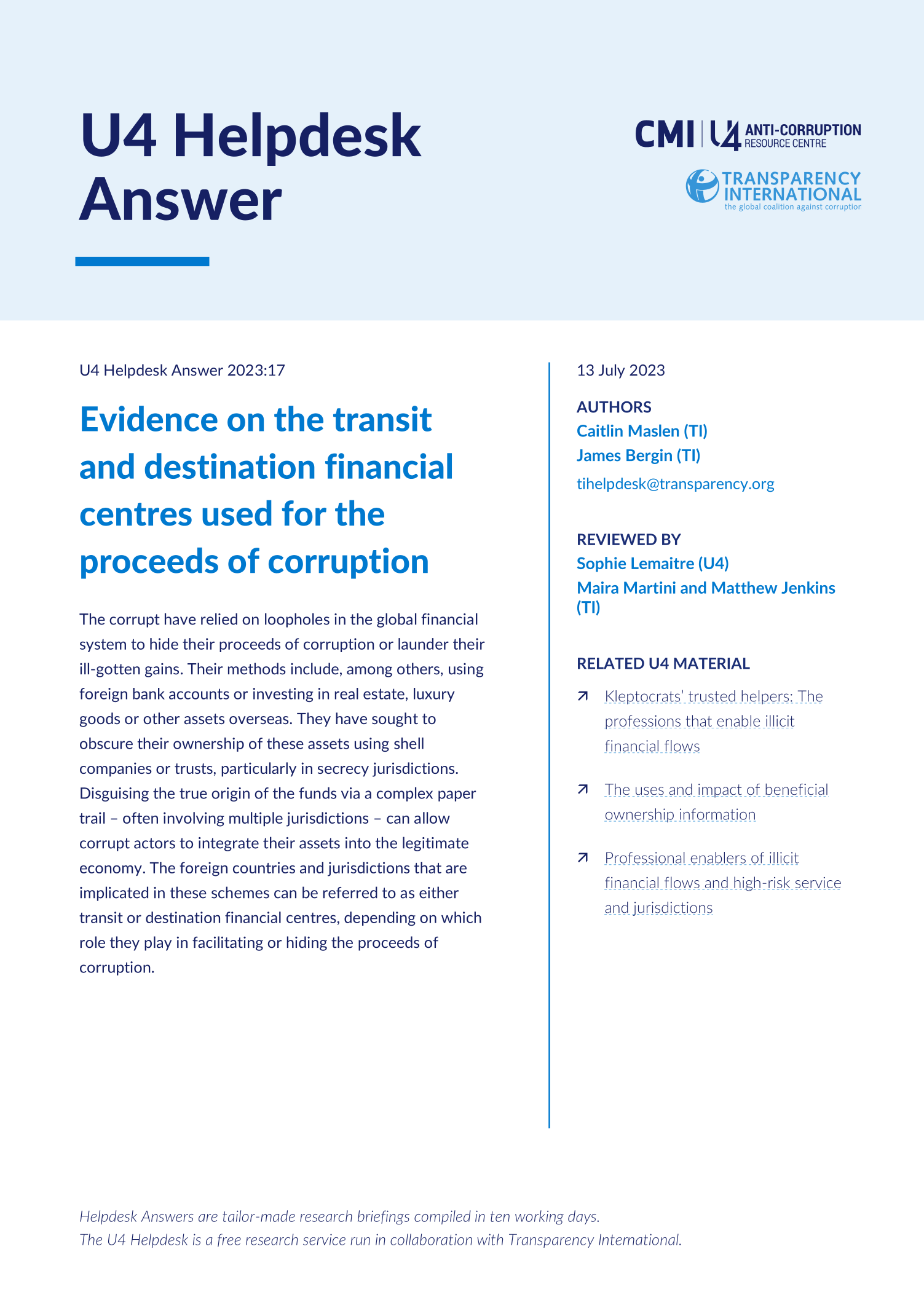Main points
- Corrupt officials who steal public funds have strong incentives to transfer their proceeds of corruption to foreign jurisdictions, which include protecting their funds from being easily reclaimed by domestic authorities and providing them access to foreign goods.
- Evidence suggests that transit financial centres commonly implicated in these schemes have high levels of financial secrecy and favourable legal conditions for financial enablers, which permits the establishment of anonymous structures to obscure the beneficial ownership of corporate vehicles that can be used to hide stolen assets.
- Destination financial centres may also be characterised by high levels of financial secrecy, but, in addition, tend to exhibit strong rule of law and political stability, geographic and cultural proximity to the kleptocrat’s source country, as well as high levels of trade and foreign direct investment.
- This area of research is still being developed and, as such, there are several limitations to the available evidence. Data on stolen assets is patchy due to their hidden nature and there is a lack of qualitative comparative analysis on the characteristics of destination and transit centres.



